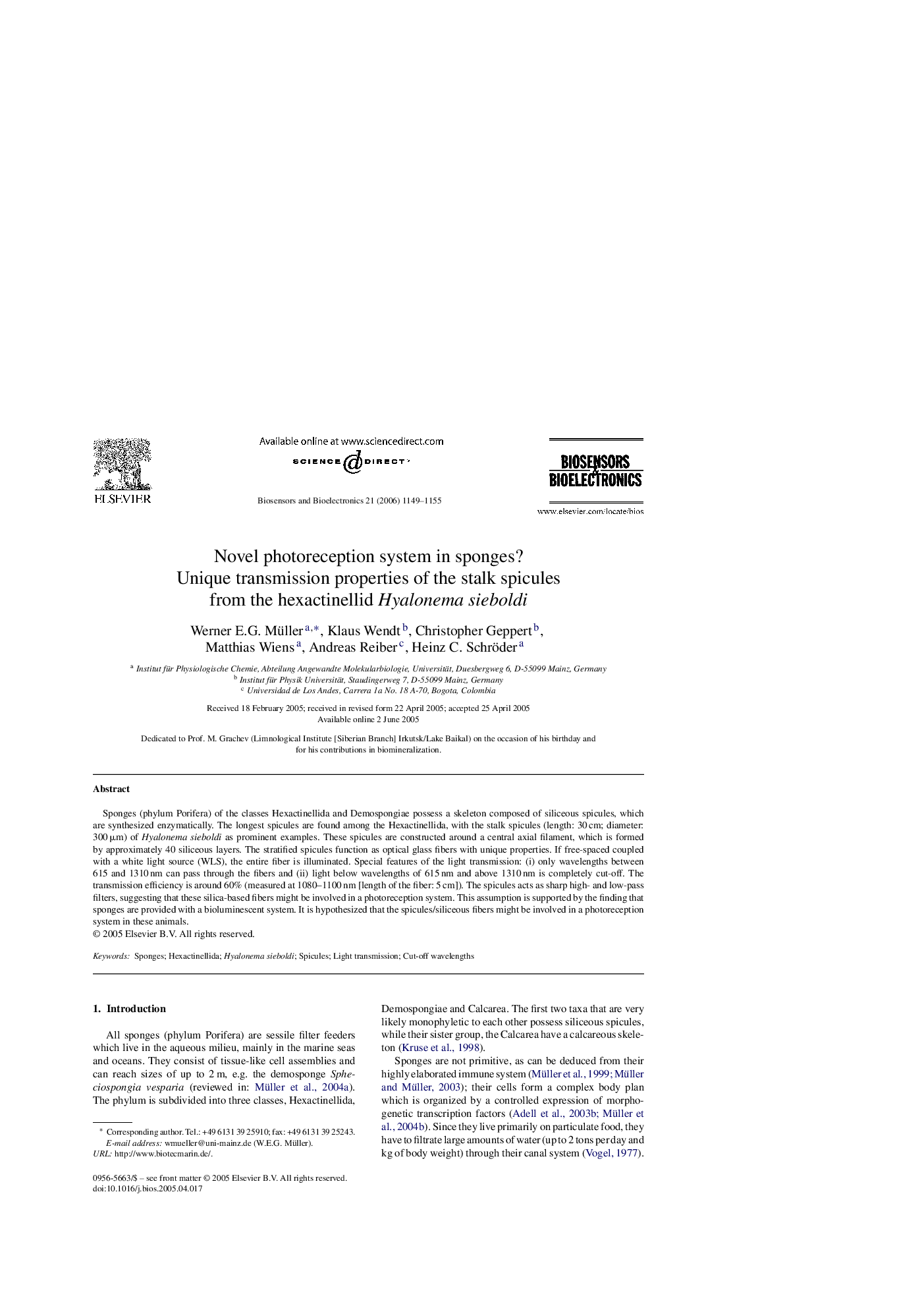| Article ID | Journal | Published Year | Pages | File Type |
|---|---|---|---|---|
| 870378 | Biosensors and Bioelectronics | 2006 | 7 Pages |
Sponges (phylum Porifera) of the classes Hexactinellida and Demospongiae possess a skeleton composed of siliceous spicules, which are synthesized enzymatically. The longest spicules are found among the Hexactinellida, with the stalk spicules (length: 30 cm; diameter: 300 μm) of Hyalonema sieboldi as prominent examples. These spicules are constructed around a central axial filament, which is formed by approximately 40 siliceous layers. The stratified spicules function as optical glass fibers with unique properties. If free-spaced coupled with a white light source (WLS), the entire fiber is illuminated. Special features of the light transmission: (i) only wavelengths between 615 and 1310 nm can pass through the fibers and (ii) light below wavelengths of 615 nm and above 1310 nm is completely cut-off. The transmission efficiency is around 60% (measured at 1080–1100 nm [length of the fiber: 5 cm]). The spicules acts as sharp high- and low-pass filters, suggesting that these silica-based fibers might be involved in a photoreception system. This assumption is supported by the finding that sponges are provided with a bioluminescent system. It is hypothesized that the spicules/siliceous fibers might be involved in a photoreception system in these animals.
